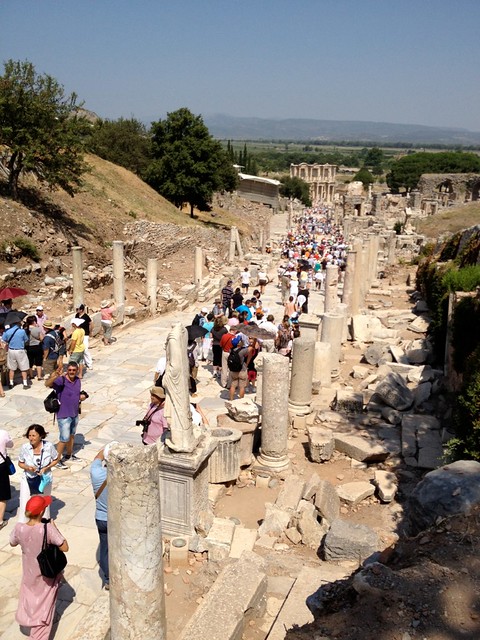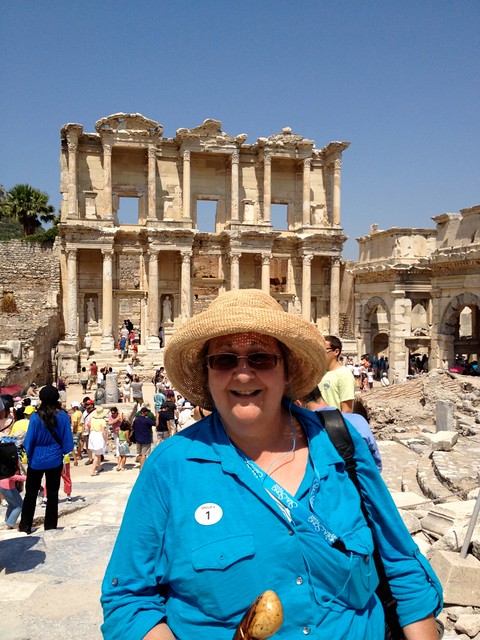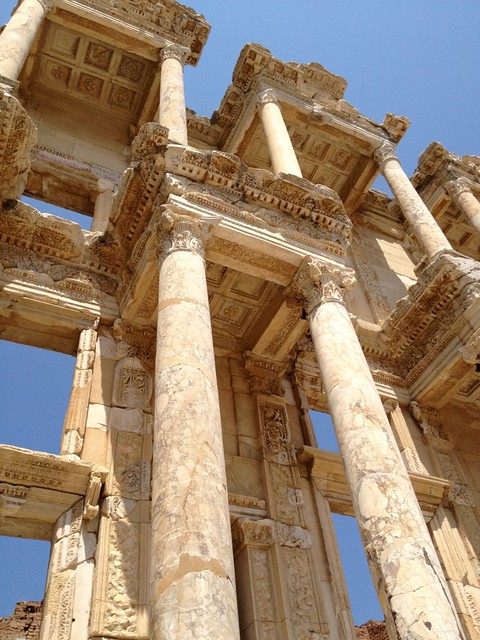From the port of Kusadasi (pronounced "Koosh-a-das-ih"), today we toured sites in ancient Ephesus.
Ephesus was once one of the largest cities in the ancient world, with a population of 250,000 at its peak. Over the centuries, the shoreline of the Aegean sea gradually receded, so when the former port was no longer actually on the water, the inhabitants eventually abandoned the city, which is now several kilometers inland. There were several cruise ships in nearby ports today, so a river of tourists flowed through the marble streets of the ruined city.
 |
| A street in Ephesus |
One of the most spectacular sights in Ephesus is the ruins of the two-story
Library of Celsus, a Roman building from the 2nd century AD that once housed 12,000 scrolls.
 |
| My mother standing in front of the Library of Celsus |
 |
| A closer view of the facade of the Library of Celsus |
After walking about a mile through the ruins and eating a tasty lunch of sandwiches and salads, we visited the Ephesus Archaeological Museum, which houses some interesting artifacts from the surrounding area. I was particularly amused by this 2,000 year old folding chair, which looks pretty much like a folding chair from today.
 |
| An ancient folding chair |
The most unusual and interesting artifact in the collection, though, is probably this huge statue from the
Temple of Artemis at Ephesus, one of the seven wonders of the ancient world. The temple itself does not exist any more; in fact, from a hilltop you can see that only one column of this formerly enormous structure still stands. In this striking-looking statue, the goddess Artemis is depicted as a many-breasted figure, with lots of different natural creatures adorning her (like the bees on the left side of her body).
 |
| Statue of Artemis from Ephesus |










No comments:
Post a Comment